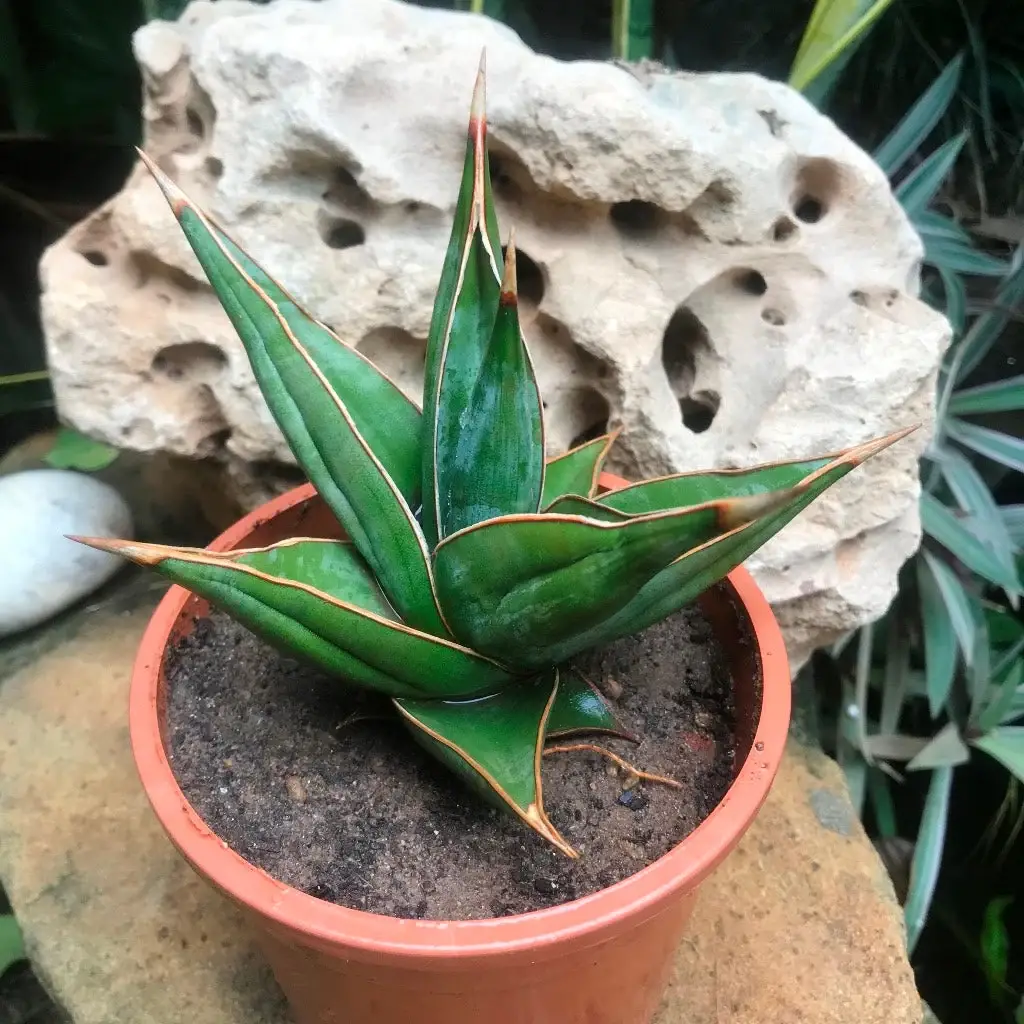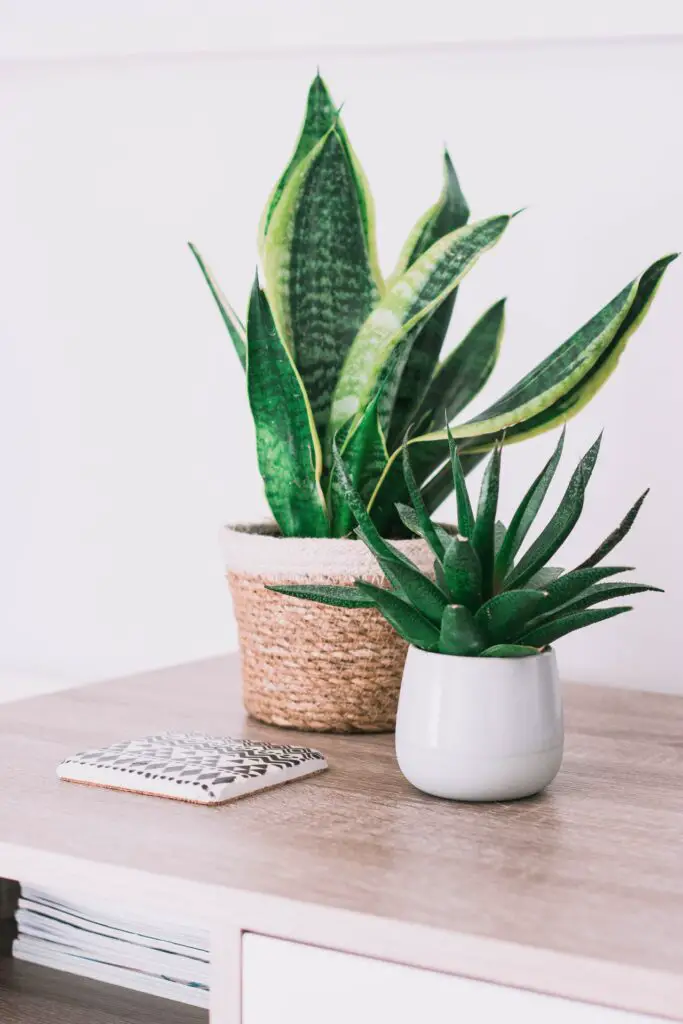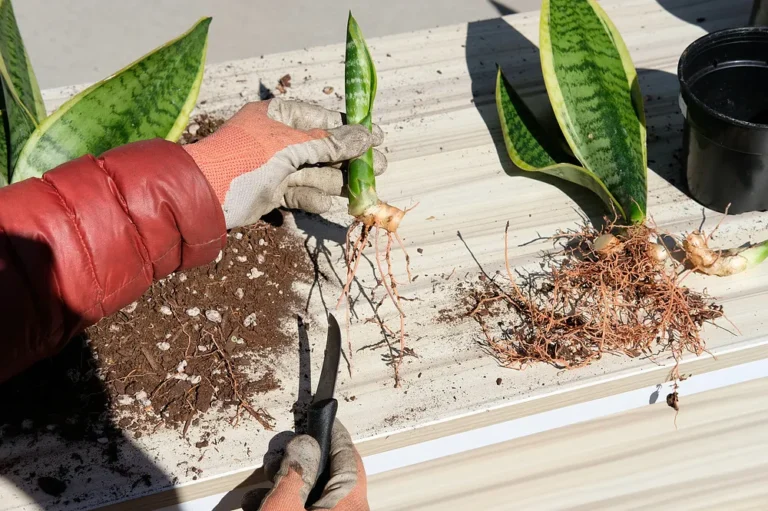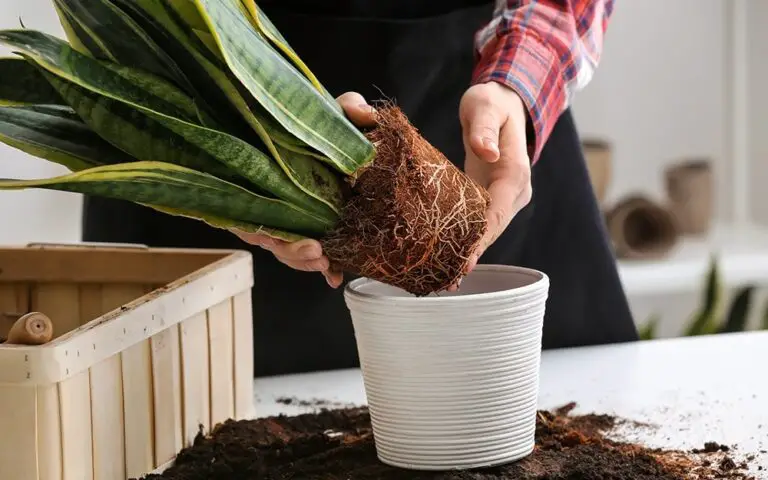Sansevieria Pinguicula Care Guide – Snake Plant Care

Also Known As
At A Glance
Features
Origin
The plant is native to eastern Africa. It is specifically found in most arid regions of Kenya.
Size
It is a relatively smaller plant that grows to around 1 foot. The spread of this plant can be up to 1 foot as well. Each leaf is 0.5-1 foot long and 1-1.5 inches thick. Flower stalks are maximum a foot tall.
Foliage
S. Pinguicula has thick, waxy, sharp-spined, pointy leaves arranged in a rosette form. They are uniform greenish-blue in color. Each leaf has a wide channel and is concave-shaped. Edges and tips are reddish-brown. Underwatered plant can form longitudinal grooves on its leaves.
Flower
Flowers are produced on a vertical flower stalk rising from the rosette. They appear in clusters of 5-6 and are white, brownish, bottle-shaped. Although the rosette won't die after flowering, it will stop growing. Stolons will continue to grow even after the blooming.
Toxicity
There's a high possibility that this variety is mildly toxic when eaten. The ingestion can cause gastrointestinal problems in humans and pets.
Growth Season
This evergreen plant actively grows during warmer climates like the spring to summer season. Flowering usually happens in the spring. In the winter, the plant is in dormant state.
Pests
This plant is very less likely to be infested by pests. Keep the leaves clean and don't let water sit in between the grooves on them. This will prevent many problems.
Propagation
Plant division is the fast and preferred method for propagation. Leaf cutting also works well but takes time. For this, cut a leaf from stolon and plant to form roots. After the roots are 1.5-2 inches long, it can be removed and planted in a new pot.
Growing Conditions
Water
This plant is drought-tolerant and doesn't require frequent watering. Allow the soil to dry completely before each watering. The watering schedule can be once every 1-2 weeks in the growth season. During winters, water once a month or less frequently than that. Don't let the soil remain wet for long, especially during winters.
Light
It can survive anything from the full sun to deep shade conditions. Bright indirect sunlight is ideal for the growth. Outdoor plants prefer shade or semi-shade in tropical regions. In a non-tropical climate, it can tolerate a full sun.
Soil
Although it can be planted almost anywhere, fast-draining and porous soil is great for this plant. Recommended mix is a combination of organic and inorganic ingredients. Mix coconut coir, gravel, perlite or peat in a regular soil (max 50%). You can also use potting mix for succulents. Make sure that the soil drains water freely.
Environment
The ideal growing temperature range for this plant is 77-95°F (25-35°C) in daytime and 50-68°F (10-20°C) during the nighttime. Although it can tolerate freezing temperatures if kept dry, it's best to avoid frost. Wet soil combined with temperature below 45°F (7°C) is fatal for the plant.


